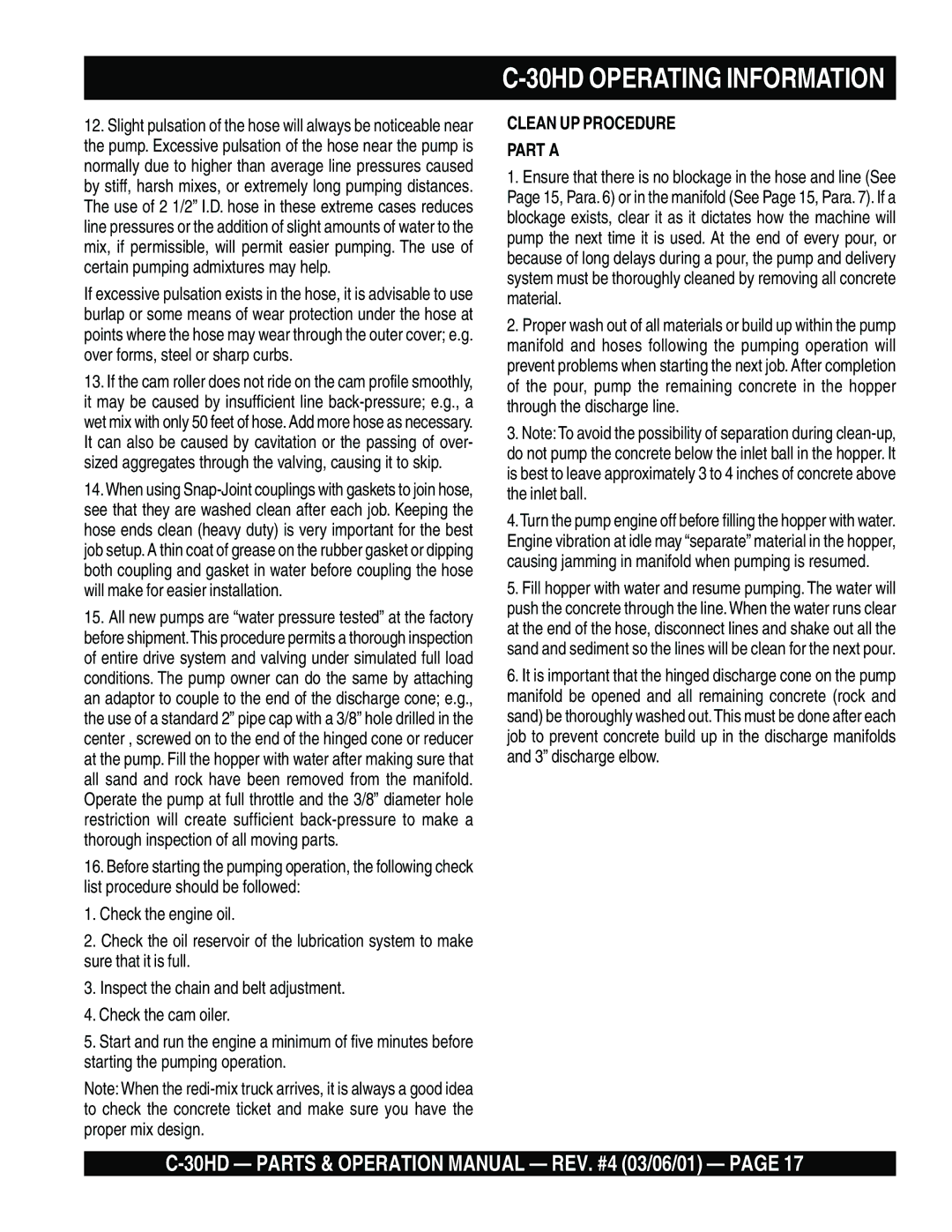C-30HD specifications
The Multiquip C-30HD is a powerful and versatile concrete saw designed for a variety of cutting applications. This robust machine is particularly well-suited for heavy-duty tasks, making it a favorite among contractors and construction professionals. With a focus on performance, ease of use, and durability, the C-30HD stands out in the competitive market of concrete cutting equipment.One of the standout features of the C-30HD is its engine. Powered by a reliable Honda GX390 gasoline engine, it delivers impressive power and ensures smooth operation during cutting tasks. The engine is designed for fuel efficiency and ease of maintenance, allowing users to minimize downtime and extend the saw's lifespan.
The C-30HD also comes equipped with a heavy-duty, adjustable frame that provides stability and precision during operation. This adjustable frame allows for depth control, enabling operators to cut to various depths depending on the requirements of the job. Its ergonomic design ensures comfortable handling, which is crucial when working on large or extended projects.
In terms of cutting capabilities, the C-30HD features a 30-inch blade capacity, allowing it to tackle substantial concrete slabs with ease. It accommodates various blade types, enabling versatility in cutting different materials like asphalt or brick. The saw is also designed with a water delivery system that helps minimize dust and cooling the blade, improving cutting efficiency and prolonging blade life.
Technologically, the C-30HD integrates advanced safety features to enhance user protection. This includes a blade guard that shields operators from potential hazards during operation. Additionally, the saw's controls are intuitively located for easy access, promoting safe operation and reducing the risk of accidents.
Another noteworthy characteristic of the C-30HD is its transportability. Equipped with sturdy wheels, this concrete saw can be easily moved around job sites, enhancing productivity and flexibility. Coupled with its rugged construction, the C-30HD is built to withstand the demands of tough working environments, ensuring longevity and reliable performance.
In summary, the Multiquip C-30HD concrete saw combines powerful performance, innovative features, and robust design. It meets the needs of professionals in the construction industry seeking high-quality concrete cutting solutions. With its remarkable engine, adjustable frame, and safety technologies, the C-30HD is a top choice for heavy-duty cutting tasks. Whether tackling large projects or intricate cuts, operators can trust the reliability and efficiency of the C-30HD to get the job done.

